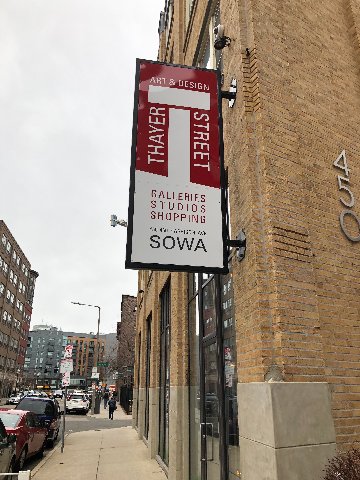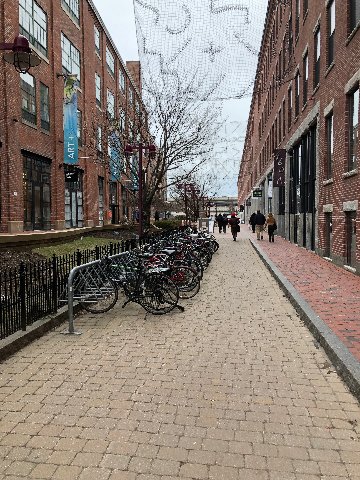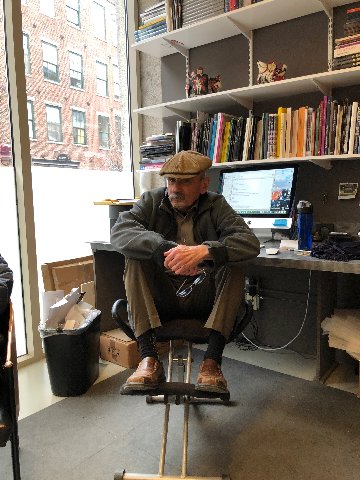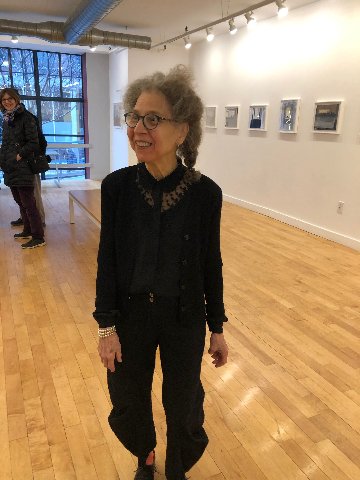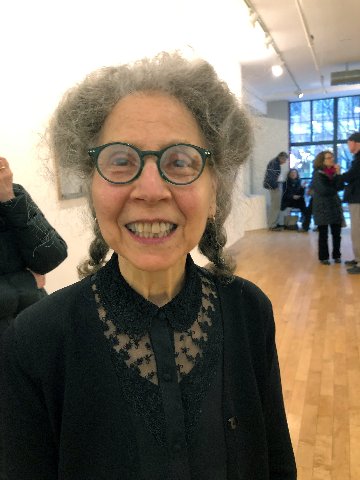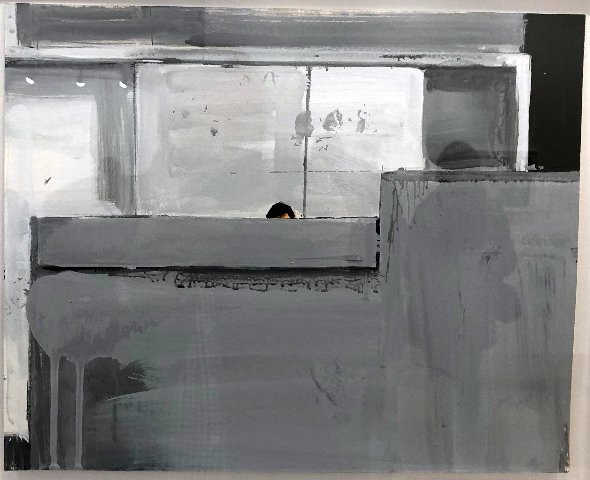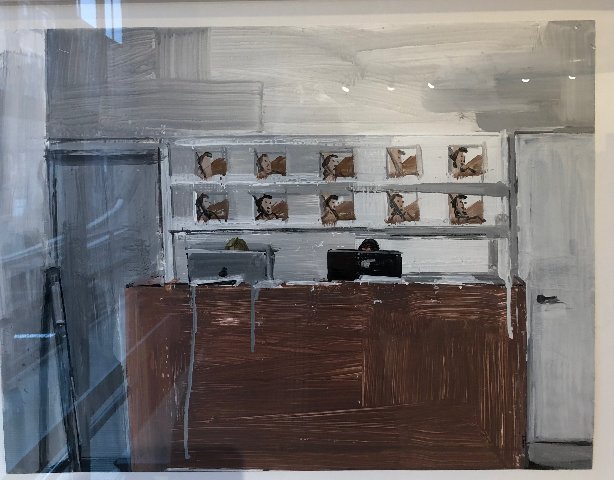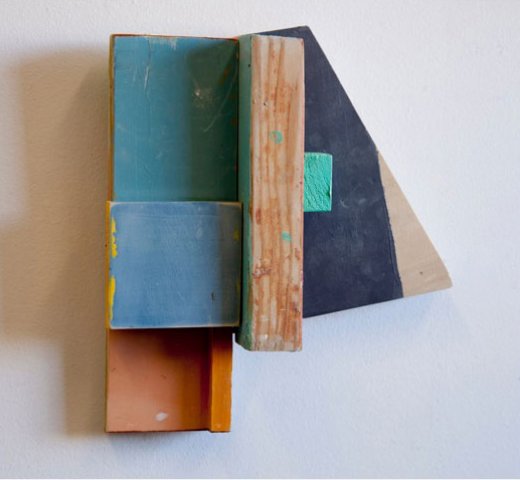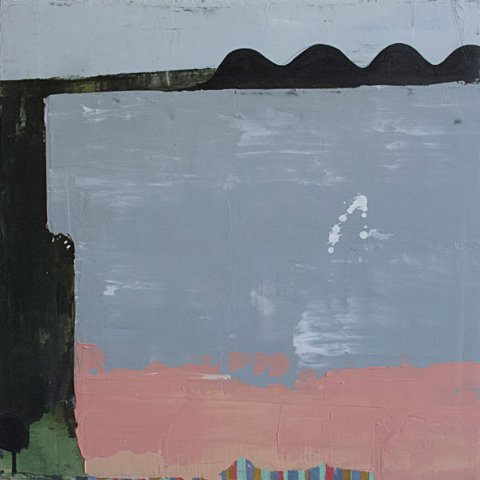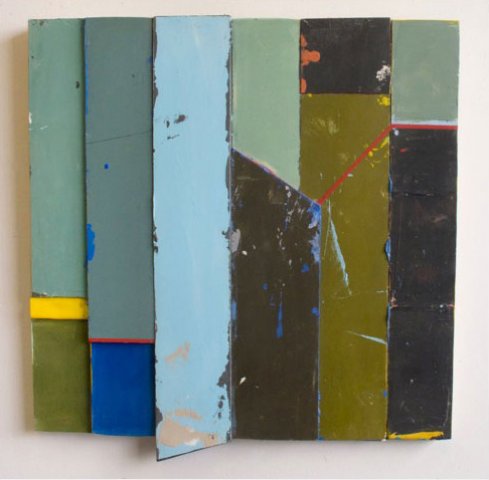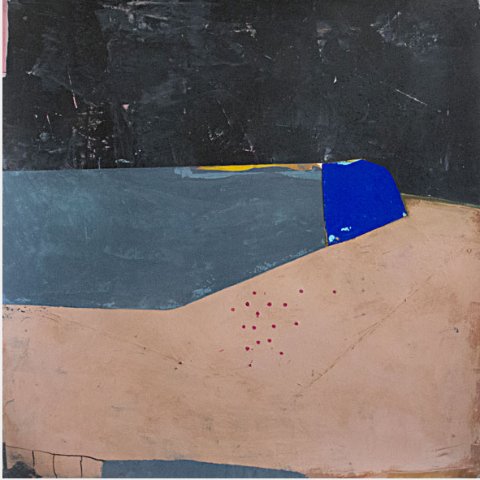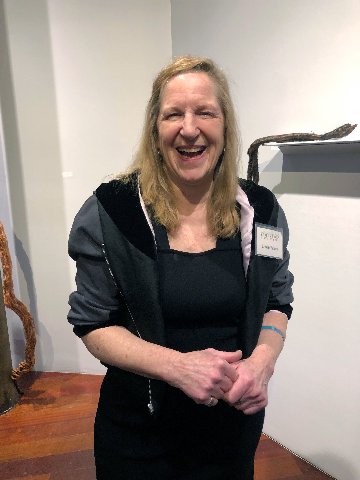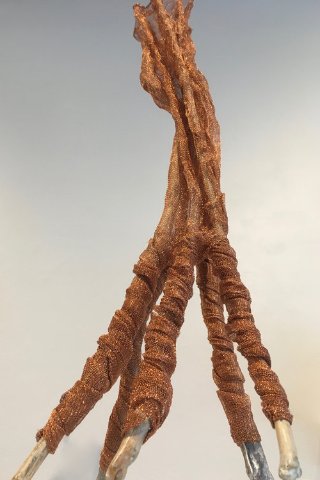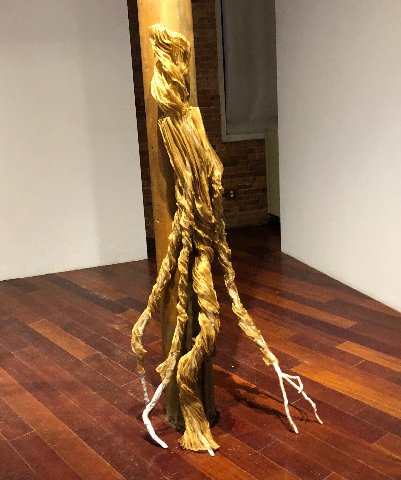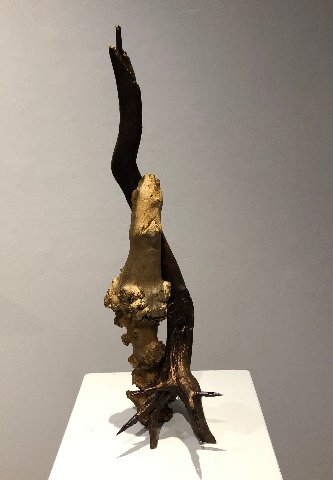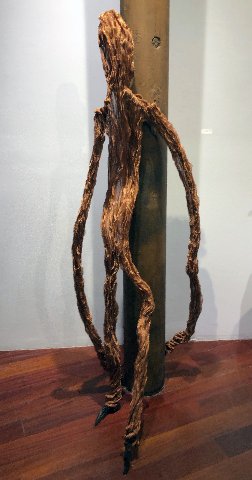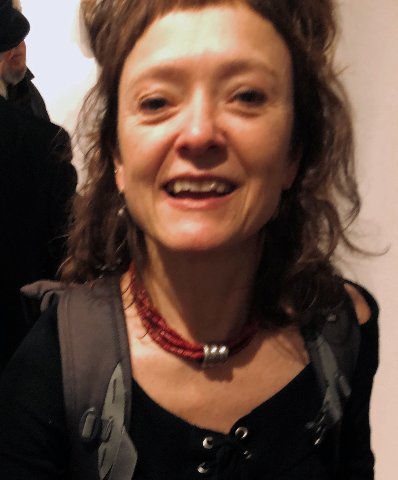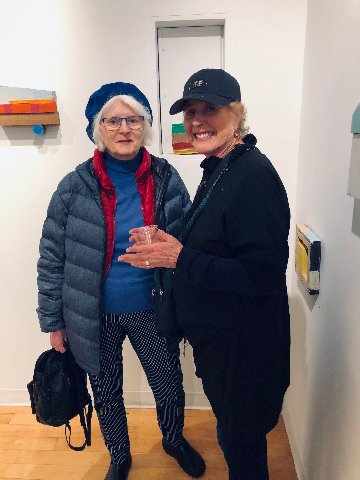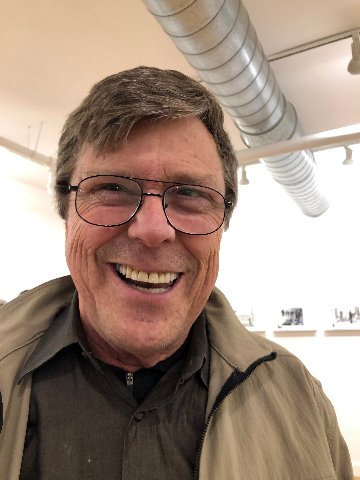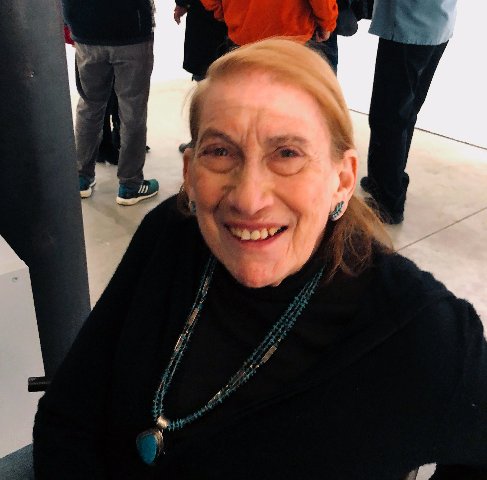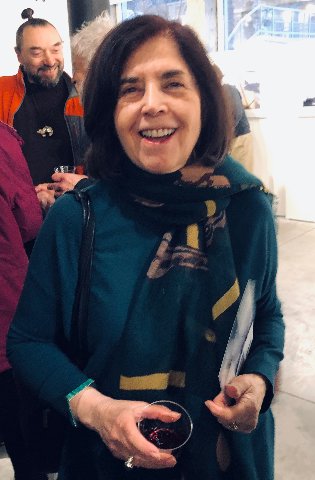SOWA in Springtime
April Exhibitions
By: Charles Giuliano - Apr 08, 2019
During a week in Boston we attended the First Friday gallery openings in SOWA the Harrison Avenue based gallery district.
It proved to be a lively adventure catching up with so many artist and gallerist friends. Being there was easy and natural as though we never left. Although many were surprised to see us.
We arrived a tad early at 5pm wanting to take full advantage of a somewhat rare opportunity. There were many galleries to visit and we focused on shows by artists I have known and covered for years.
That entailed stopping to catch up with gallerist Howard Yezerski. With humor he reminded me of our first meeting decades ago on South Street. “You were lamenting the loss of Stux Gallery which had recently departed for New York.”
It provided a conceptual bookend for regarding the Boston gallery scene as pre and post Stux. During its day, far and away, Stux was the most influential gallery.
Encountering Gerry Bergstein, however, we discussed the pre Stux phase with a cluster of galleries on Congress Street including Cutler/ Stavaridis and Helen Shlein. Gerry had his first show at Lopoukine/ Nayduch Gallery.
“You wrote my first review for the Patriot Ledger” he recalled. When we were all so young, who knew that one day we would be looking back over an expanse of decades.
Hanging with Howard is always a Beckett like drama and equivalent to Waiting for Godot. It’s kind of a real time theatre of the absurd as we lapse into the roles of Vladimir and Estragon. We should rehearse their vaudeville hat trick routine.
Fit as a fiddle he can do things that I can’t. Like tie his shoes and curl up in Yoga like postures on a chair. Actually, as he pointed out, he wears loafers. I teased whether he had any hair left under that jaunty cap. Removing it I complemented him on how succinctly the close cropping enhanced a chiseled, expressive and photogenic face. “Katherine cuts it” he commented.
I asked if he still watches TV in every room in the house? “Not the bathroom” he replied with a soupcon of whimsy. “Mostly sports.”
Artist David Moore was visiting Howard and I asked if he is still playing the saw. “Yes” was the response “With a cello bow.” We talked about music and how it is tough on school nights to show up for gigs.
People were starting to filter in and we made our way across the alley to Gallery Kayafas. There old friend Laura Chasman was surprised to see us. We had last seen each other a couple of years ago at the Burlington Museum.
She was a roommate decades ago of someone I was dating. We would have furtive conversations that haven’t changed much. I first knew her work for small, cunning, insightful portraits of family and friends. My hope that she would do one of me never happened. It’s too late now as I don’t look as great as I used to. Then again, who does?
Years ago I offered her a summer show at New England School of Art & Design. At the time she was miffed, but with a busy schedule and overbooking, it was the best I could do.
Good people saw the show and not long after she won the MFA’s Maud Morgan Prize. I always loved the work even before she became sortah famous.
In particular, I enjoyed a series of portraits of her son Oliver. Literally you could watch him grow up through her quirky paintings. I asked if Oliver by now is a grandfather? Laura doesn’t always get my jokes which is a part of our history.
It so pleased me to see the dramatic change in the work. She talked about six months of scrubbing out and starting over every day. Finally, she was pleased enough to create this stunning, witty and insightful show.
I find it just hilarious and a scathing critique of the art world. It captures that experience of walking into galleries and seeing slivers of heads above the fortress like reception barricades. It’s a metaphor for how galleries allow but generally abhor interacting with the great unwashed that invade their pristine showcases. Heaven forbid we should like breathe on the work. It is clear that galleries exist for the superrich of which we do not qualify. Even critics are subjected to withering indifference.
On one such barricade there is a pile of manila envelopes. She explained that those are the submission packets that artists used to send. That’s when they spent a fortune on slides and text. “I sent so many of those that it was natural for me to paint them.” Today, of course, its also done using e mail and internet images. So the series is something of a time capsule of the frustrating inner life of artists.
Kingston Gallery was mobbed with colleagues of the late Julie Graham. Her artist friend Mira Cantor curated a compelling selection of the abstract works.
In an earlier artist’s statement Graham wrote: “I'm intrigued by the overlooked, the uncertain and the unpredictable. We never know what's around the next corner—what will happen, or what we'll see. I'm always compelled by the potential, which is sometimes disquieting, sometimes incomprehensible, and so often thrilling.
“My practice is intuitive and process based, and mirrors the act of looking for those unforeseen moments. I construct relationships with paint and materials to create improbable combinations with which colors and textures randomly collide to form surprising and odd relationships. I'm attracted to places on "the other side of the tracks"—urban industrial areas, abandoned buildings, minimalist spaces and clustered housing in foreign lands. In particular, vernacular architecture draws my attention, as it reflects the character of local cultures and their indigenous materials.
“But mostly, I just paint.”
There were snatches and fragments of conversations. Astrid and Mira caught up somewhat more extensively. I urged her to move on as there were more galleries to see.
At Galatea Gallery Mags Harries pointed out three photographs that were somewhat conflated with ones hung adjacently. For years I have followed inventive sculptures and this was a first encounter with her photography. It was difficult to establish commonality.
The clock was running and I wanted to get to Boston Sculptors further along Harrison Avenue. The generously scaled cooperative space is always a highlight of a gallery run.
In particular, I wanted to see new work by Leslie Wilcox. Again, there were compelling similarities and differences. The show Enrootables continues her theme of trees as metaphors. In the past she has found ways to non invasively embrace and transform them. We last saw that aspect of the work in the annual, site specific, juried show at Chesterwood in the Berkshires.
A constant in the work is inventive but uncomplicated use of materials. This always seems intuitive in a Duchampian manner bordering on assisted readymades. In this case she has found some things and then twisted copper wire around it to create a spirit encased in an ersatz tree. They vary in degrees of complexity both visually as well as conceptually.
As a career defining metaphor trees have been a richly varied project. No matter how transformed one always immediately knows that it is a work by Wilcox. It has her unique sense of psychic branding. It is why the sculpture on every level is so profoundly rooted in nature.
I’m not quite sure what she means by Enrootables but it was great to go along for the ride. In her work one always sees the forest and the trees.

